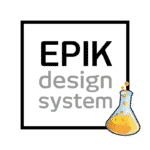Setting up your meetings well – 10 point checklist
I’ve sat through a lot of meetings. Many of them were terrible and ineffective. There are a lot of different aspects to a good meeting, some are easier to fix than others. Fortunately one of the most common failings is relatively easy to fix with some careful thought and discussion, namely “What is the purpose of this meeting?”.
To produce useful management information you need to be clear how it’s going to be used. I always steer clients towards completing a “Meeting Terms of Reference” template before they start designing their KPI reports and dashboards.
The meeting Terms of Reference is designed to answer a few really basic questions:
- What is the purpose of the meeting?
- What is the scope of the meeting?(which part of the organisation, approval level etc.)
- What are the inputs for the meeting? (data, reports, samples etc.)
- What are the outputs of the meeting? (decisions, budget approval, judgements, sign-off etc.)
- Who should be there? (by role and authority)
- How often does the meeting happen?
- Who runs the meeting? (by role, if you need to put names in there then make sure you have contingency owners as well)
- What are the roles and responsibilities? (e.g. minute taking, organisation, producing the timetable etc.)
- Where does the meeting happen?
- How long is the meeting?
All basic stuff, but surprisingly poorly defined in most organisations. I’m by no means a “meetings fascist” (I’ve sat through a few meetings run by that sort, it’s a bit like being mugged) but answering these questions can help reduce the amount of rework you have to endure when designing reports and dashboards.

![Complete Guide to the OKR Framework: How to Create OKRs for Your Team [2024] okr kpis and targets logo](https://madetomeasurekpis.com/wp-content/uploads/2021/12/okr-kpis-and-targets-logo@2x-150x150.png)





Nice list Bernie
I particularly like point 1
Can I add one? Particularly for long meetings, what is the process the meeting is going to follow to get to the end point you want.
JL